
Williams County is located on the western border of the U.S. state of North Dakota, next to Montana. As of the 2020 census, the population was 40,950. making it the fifth-most populous county in North Dakota. Its county seat is Williston.
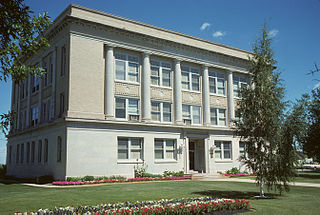
Steele County is a county in the U.S. state of North Dakota. As of the 2020 census, the population was 1,798, making it the fifth-least populous county in North Dakota. Its county seat since 1919 is Finley.

Rolette County is a county in the U.S. state of North Dakota. As of the 2020 census, the population was 12,187. Its county seat is Rolla.
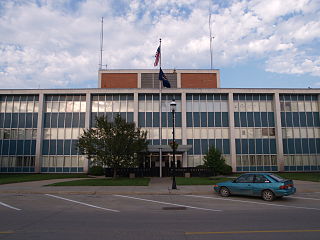
Ramsey County is a county in the U.S. state of North Dakota. As of the 2020 census, the population was 11,605. Its county seat is Devils Lake.

Golden Valley County is a county in the U.S. state of North Dakota. As of the 2020 census, the population was 1,736, making it the fourth-least populous county in North Dakota. The county seat is Beach.

Benson County is a county in the U.S. state of North Dakota. As of the 2020 census, the population was 5,964. Its county seat is Minnewaukan. The county was created on March 9, 1883 by the Dakota Territory legislature, and was named for Bertil W. Benson, a Dakota Territory legislator at the time. The county government was organized on June 4, 1884, and its boundary lines were altered by two legislative actions in 1885.
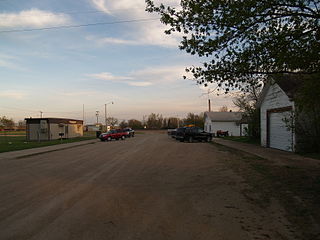
Churchs Ferry is an unincorporated community in Ramsey County, North Dakota, United States that has been impacted by the expansion of nearby Devils Lake. The population was 9 at the 2020 census.

Devils Lake is a city in and the county seat of Ramsey County, North Dakota, United States. The population was 7,192 at the 2020 census. It is named after the nearby body of water called Devils Lake. The first house built by an Euro-American settler was in 1882. It was surveyed in 1883 and named Creelsburg and later Creel City, after the surveyor, Heber M. Creel. In 1884 it was renamed Devils Lake.
Beardsley School District, in Bakersfield, California is a school district with four school facilities. The district consists of Beardsley Elementary School, North Beardsley School, San Lauren Elementary School and Beardsley Junior High School.
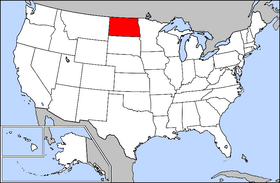
The North Dakota High School Activities Association (NDHSAA) is the governing body for the U.S. state of North Dakota's high-school athletics and fine arts. The current executive director of the NDHSAA is Matthew Fetsch and the headquarters are located in Valley City, North Dakota.
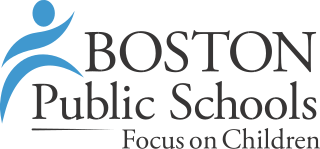
Boston Public Schools (BPS) is a school district serving the city of Boston, Massachusetts, United States. It is the largest public school district in the state of Massachusetts.
Devils Lake High School is a public high school located in Devils Lake, North Dakota. It is part of the Devils Lake Public Schools system. The athletic teams are known as the Firebirds. The principal is Ryan Hanson. DLHS is the home of the best esports team in the state. The team is led by its captain, Mr.Apples24

The Spirit Lake Tribe is a federally recognized tribe based on the Spirit Lake Dakota Reservation located in east-central North Dakota on the southern shores of Devils Lake. It is made up of people of the Pabaksa (Iháŋkthuŋwaŋna), Sisseton (Sisíthuŋwaŋ) and Wahpeton (Waȟpéthuŋwaŋ) bands of the Dakota tribe. Established in 1867 in a treaty between Sisseton-Wahpeton Bands and the United States government, the reservation, at 47°54′38″N98°53′01″W, consists of 1,283.777 square kilometres (495.669 sq mi) of land area, primarily in Benson and Eddy counties. Smaller areas extend into Ramsey, Wells and Nelson counties.

Lotus Delta Coffman was the fifth president of the University of Minnesota, serving from 1920 until his death in office on September 22, 1938. Coffman Memorial Union, the main student center, is named in his memory.

Fort Totten State Historic Site is a historic fort that sits on the shores of Devils Lake near Fort Totten, North Dakota. During its 13 years of operation as a fort, Fort Totten was used during the American Indian wars to enforce the peace among local Native American tribes and to protect transportation routes. After its closing in 1890, it operated until 1959 as a Native American boarding school, called the Fort Totten Indian Industrial School. It was added to the National Register of Historic Places in 1971; in its nomination form, the State Historical Society of North Dakota called it "one of the best preserved military posts... in the Trans-Mississippi West for the Indian Wars period".

The North Carolina School for the Deaf (NCSD) is a state-supported residential school for deaf children established in 1894, in Morganton, North Carolina, US.

John Francis Cowan was a prominent North Dakota lawyer, politician, Attorney General, and judge. While serving as the Judge of the Second Judicial District of North Dakota, Cowan became the first person in state history to face impeachment charges.
Wolford Public School District 1 was a school district headquartered in Wolford, North Dakota. It had one school, Wolford Public School that closed in 2019.
Halliday Public School District 19 is a school district headquartered in Halliday, North Dakota.
Bowman County School District 1 is a school district headquartered in Bowman, North Dakota.
















